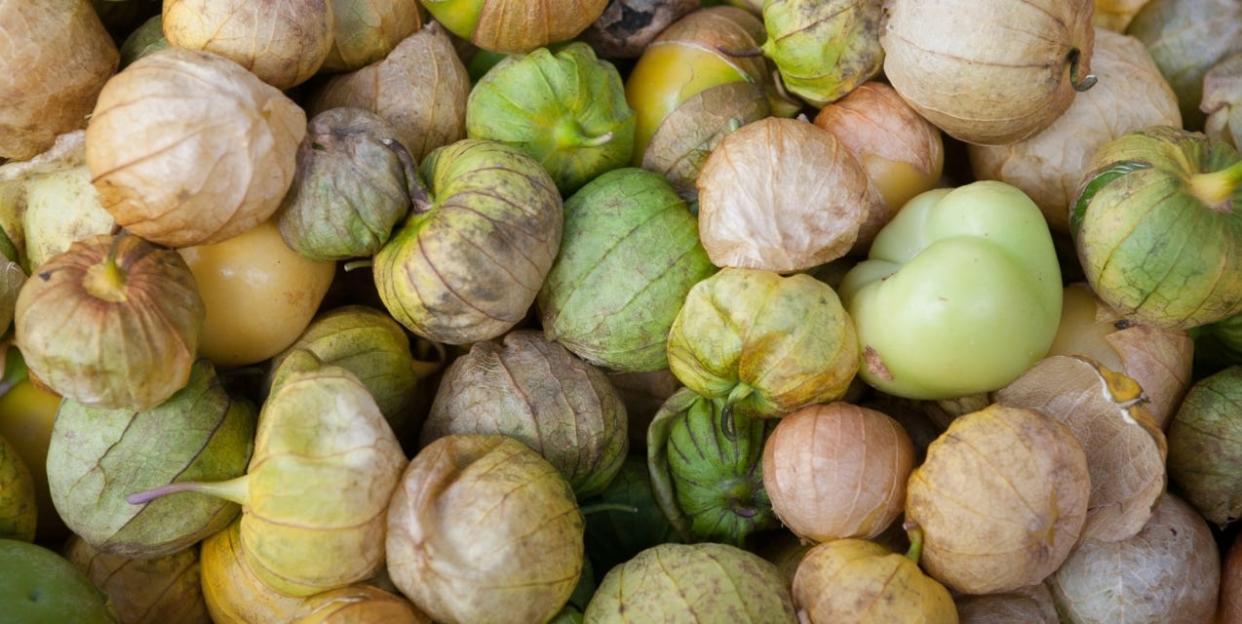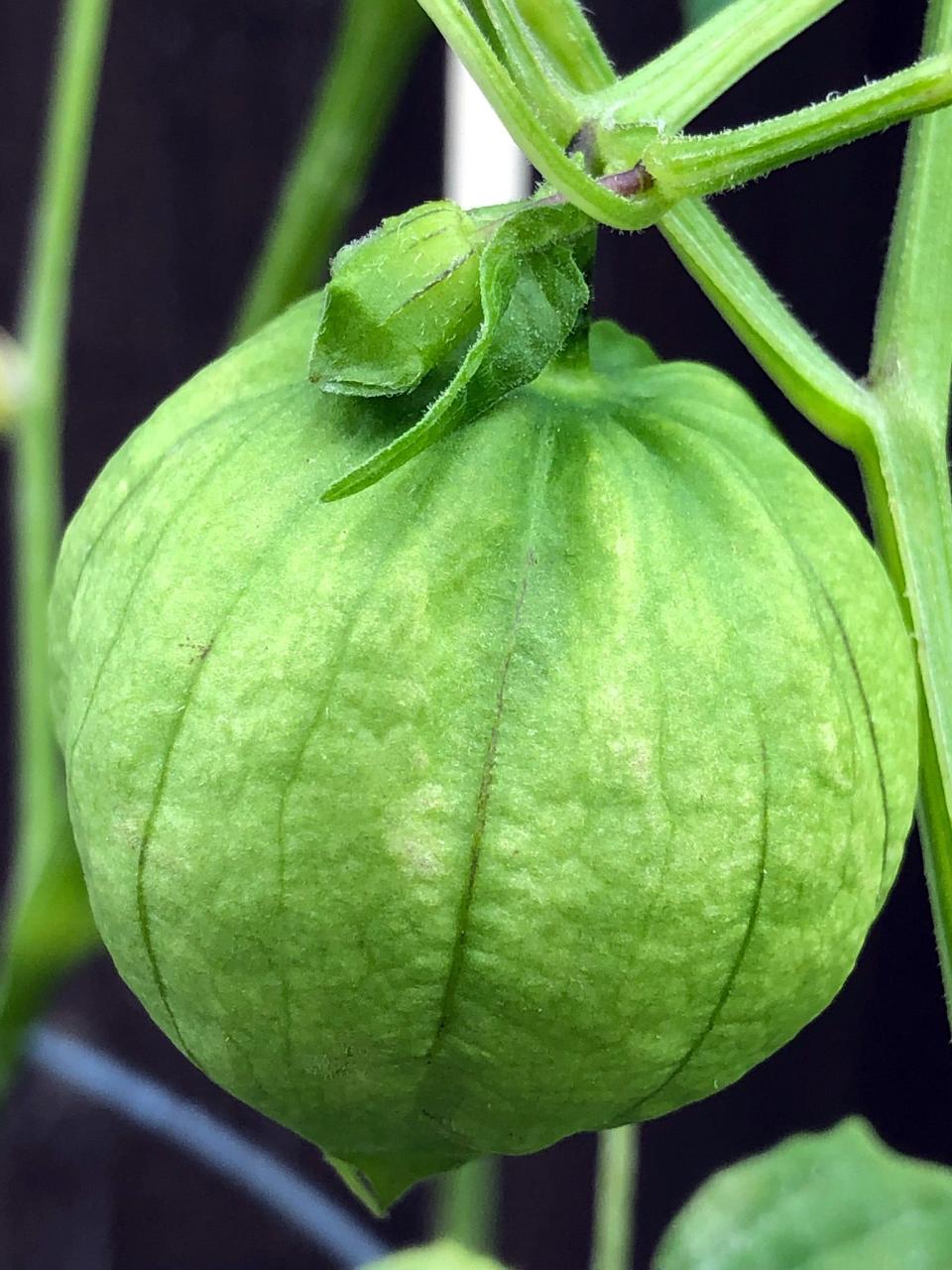Tomatillos are easy to grow in the home garden: Follow these tips

Every growing season, I like to grow one or two plants that I have never grown before. It might be a vegetable or an ornamental plant, but each year I learn new things about gardening simply by growing plants that I have never grown before. This year, I am growing tomatillos, a plant that I have no experience with beyond my consumption of salsa verde, which is typically made with tomatillos, and not green tomatoes.
Sometimes called husk tomatoes, tomatillos are native to Mexico and Central America and were domesticated by the Aztecs around 800 B.C. While the tomatillo is sometimes called a green tomato, the fruit of these two plants taste very different, with tomatillo having a tangy citrus flavor. Tomatillos can be eaten raw or cooked and taste great with meat, garlic, onion, chilis and cilantro. And best of all, they’re easy to grow in the home garden.
Meet the family
The tomatillo (Physalis philadelphica and Physalis ixocarpa) is a member of the nightshade or Solanaceae family of plants. Other members of this family include tomatoes, peppers, eggplants, potatoes, and tobacco. While the word "tomatillo" means "little tomato" in Spanish, the tomatillo is more closely related to peppers than tomatoes.
Tomato tips: Maximize the size of your tomatoes by following these helpful pointers
Tomatillo fruits can be green or purple in color, and are encased in an inedible, paper-like husk. The fruit has a tart flavor with hint of citrus or green apple. All parts of the tomatillo plant except the fruit are toxic.
Growing tomatillos
Like other plants in the nightshade family, tomatillos are a warm-season crop that grows best in full-sun locations that receive 6-8 hours of direct sun each day. Tomatillos will not grow well in soils with poor drainage, so plan to improve drainage by adding several inches of organic matter when planting in soils that are slow to drain. As an alternative, tomatillos can also be planted in raised beds.

To reduce the chance of disease, tomatillos should not be planted in locations in the garden where other members of the nightshade family have been planted. Because plants in the same family are typically susceptible to the same plant diseases, gardeners need to rotate plant families each year, not just specific plants.
Tomatillos grow best in acidic to neutral soils with a pH of 5.9 to 6.9, so in many locations in Greater Columbus, gardeners should be prepared to lower the pH of the native soil by adding elemental sulfur. If you don’t know the pH of your soil, have your soil tested for fertility and pH here: go.osu.edu/franklinsoiltest. Unlike their tomato cousins, tomatillos are not a heavy nutrient feeder and do not require frequent fertilization throughout the growing season.
Perfect peppers: Tips for growing the perfect pepper in your home garden
Tomatillo plants tend to spread and sprawl and will require support to keep the foliage and fruit off the ground. Tomatillo plants have more lateral branches than tomatoes, so a trellis or fence tends to work better than a central stake for supporting tomatillo plants. Sturdy tomato cages can also work well to support tomatillo plants. Plant tomatillo plants 2 feet apart to give them room to spread.
Tomatillo plants are not self-pollinating, so be sure to plant more than one plant to ensure fruit set of tomatillos. Two different varieties of tomatillos are not required for pollination, just two plants.

Tomatillo varieties
While tomatillo seedlings are not always widely available in all garden centers in spring, seeds of several different varieties are available from many different seed companies. Here is a list of different varieties of tomatillo:
Toma Verde – the standard large-fruited variety with golf-ball sized, tart, green fruit
Purple Coban – produces purple fruit
Rendidora – produces higher yields
Tamayo – produces large, green fruit
De Milpa – strongly flavored, available in green or purple fruit color
Ask the Expert: What disease do my tomatoes have and how do I manage it?
Harvesting and storage
Tomatillos are ready to harvest when they fill out their husks and the husks start to split. Fruit become soft when overripe. Tomatillo fruit often drop off the plant before they ripen. These fruits can be stored in their husks until they are fully ripe.
Harvested tomatillos can be stored in their husks at room temperature for a week or in the refrigerator for up to three weeks. Tomatillo fruits are coated with a sticky substance that should be washed off before cooking or consumption.
Tomatillo plants are indeterminate, which means that they will continue to flower and set fruit until the first frost.
Mike Hogan is an Extension educator, Agriculture and Natural Resources with Ohio State University Extension. hogan.1@osu.edu
This article originally appeared on The Columbus Dispatch: Gardening: Different kinds of tomatillos and how to grow them
